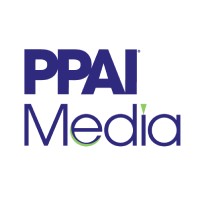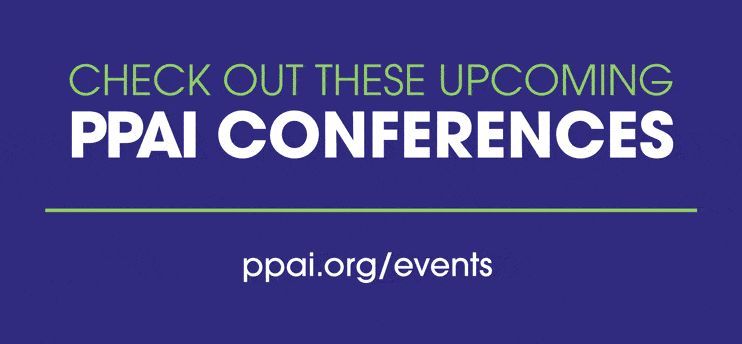PPAI’s Virtual Product Responsibility Summit, which began on Monday, continues throughout the week delivering 13 virtual sessions on the most in-demand topics associated with compliance, vetting supply chains and must-know guidance on personal protective equipment. Each day concludes with roundtable chats where participants can network and continue conversations about the sessions. More than 140 participants are registered for Summit this year, and this is the first time the event has been presented virtually. Programming will wrap up on Friday afternoon.
The Federal Drug Administration (FDA) was the focus of two sessions presented on Wednesday: the first examined best practices when importing, distributing and labeling products regulated by the FDA. During the 60-minute session, moderator Kyle Hach with Raining Rose and panelists Josh Grauso with UL and Angela Bazigos with Touchstone Technologies discussed how the FTC distinguishes over-the-counter products from cosmetic products, along with dos and don’ts related to supply chain compliance and facility audits. Afterwards, they took questions posted by audience members on a chat board.
“If you have a moisturizing soap, it’s a cosmetic; if you have an antibacterial soap, it’s an OTC,” explained Bazigos. Grauso said that the region where the product is sold will also have some nuance in the definition. “For example, in the U.S., sunscreen containing SPF would be registered as OTC, while in the EU, sunscreens are often regulated and registered as cosmetic products,” he said, adding that this nuance is important to remember in marketing the product.
The panelists also talked about two things the FDA will enforce in the manufacture of products considered “cosmetics”: the assurance that a product is not mislabeled and that it is not adulterated [impure or contaminated]. If a manufacturer puts a product into commerce that is found to be mislabeled or adulterated, the FDA has the right to investigate and inspect it.
On Wednesday, the program also included a brief state of the industry update presented by Paul Bellantone, CAE, president of PPAI, and Suzanne Worwood, senior vice president of merchandising and supply chain for distributor 4imprint. Bellantone launched the conversation and gave listeners some context by asking Worwood her thoughts on how much compliance matters now and once we get past the pandemic. The pair also talked about how their businesses have changed and stayed the same during the pandemic, how sales of PPE have affected the industry, the transformation that’s taking place in some of the markets the industry serves and how the industry is faring overall.
The afternoon session focused on the FDA and the process of issuing recalls, which included identifying the entity that is responsible for submitting the recall, preparing your company in the event that a recall is required, and ensuring how to package and label products to safeguard against recall and ensure consumers’ health and safety. The session was led by first-time PPAI presenters, Pamela Ogonowski, recall coordinator with the FDA’s Office of Strategic Planning and Operational Policy Division of Enforcement, and Kathleen Sanzo, a partner with Morgan Lewis, representing regulated and consumer product companies in regulatory and related issues, and was moderated by Neal Cohen, product safety attorney and consultant with Neal Cohen Law.
“The first thing anyone has to think about when they’re bringing a product into this country is what jurisdiction [it’s in],” said Sanzo. Tying into the information shared in the morning session, Sanzo opened with a discussion on how some products may be clearly identifiable as a food, cosmetic, OTC drug, medical device or dietary supplement, but others, like sunscreen, may be perceived as cosmetic when it is really considered an OTC drug in the U.S. The least regulated jurisdiction for this is cosmetics, said Sanzo, where there is no registration requirement, but instead a voluntary system. Once a product is correctly identified, it must be registered and listed with the FDA, which entails “identifying for the FDA the products that you are bringing into the country and/or distributing in the U.S.”
Correctly identifying a product’s jurisdiction is also important, Sanzo said, because the requirements can vary depending on where you are in the product’s supply chain. Generally, manufacturers are responsible for registering and listing products, but private label distributors can also assume the responsibility of registering and listing a product they’re putting their branding on, which usually happens in a contract manufacture capacity, she says. But if there’s any confusion as to who is responsible for issuing the recall, the FDA will get involved.
Along with manufacturers and distributors, kitters—people who are assembling different kinds of products into kits, such as first-aid kids—are also involved in the process. If different components of a product are being purchased and then packaged altogether and sold as a kit, the kit itself may also have to be registered as its own product, she said.
For kitters—and for those distributing product in general—it is important to use labeling that correctly identifies and explains the product and its appropriate use. Distributors want to prevent against using verbiage that is false or misleading about the product—i.e., “This product cures cancer,” Ogonowski said—something that is particularly relevant with PPE and the distribution of non-surgical cloth masks that do not meet the requirements for being labeled as a FDA-certified surgical mask. In this case, she said the FDA suggests adding disclaimers to the product, which also circumvents being sued for personal injury.
When a recall does occur, the majority are voluntary, said Ogonowski. Recall, she explained, “can be a correction or a removal of product. For the products in promotional products, it’s almost always going to be a removal.” When companies are distributing high quantities of product—such as 100 hand sanitizer bottles or 1,000 lip balms—they are not going to retrieve the products themselves, but it’s the company’s responsibility to protect consumers from products that can be violative or cause potential harm to those using them. The FDA can, however, issue mandatory recalls on products recognized as medical devices. “This is going to be resolved for serious issues. We want to have a cooperative relationship in the event that if you’re not forthcoming and not willing to recall after we laid out the risks and what can happen, we can formally request a recall, mandate and, if you refuse to recall, we can also put out press and advise consumers not to buy their products.”
The FDA’s recall process is built on speed and getting the necessary information to consumers as quickly as possible. When a recall is issued, it is done with the FDA in the same day or next day, said Cohen. “We want to make sure that people aren’t getting sick or injured from these products,” said Ogonowski. And to extend this, the FDA also requires companies that have issued a recall to follow up with reports—the frequency of which depends on the severity of the recall—and share their long-term plan with the FDA regarding the current recall, and how the company plans to address potential future recalls


